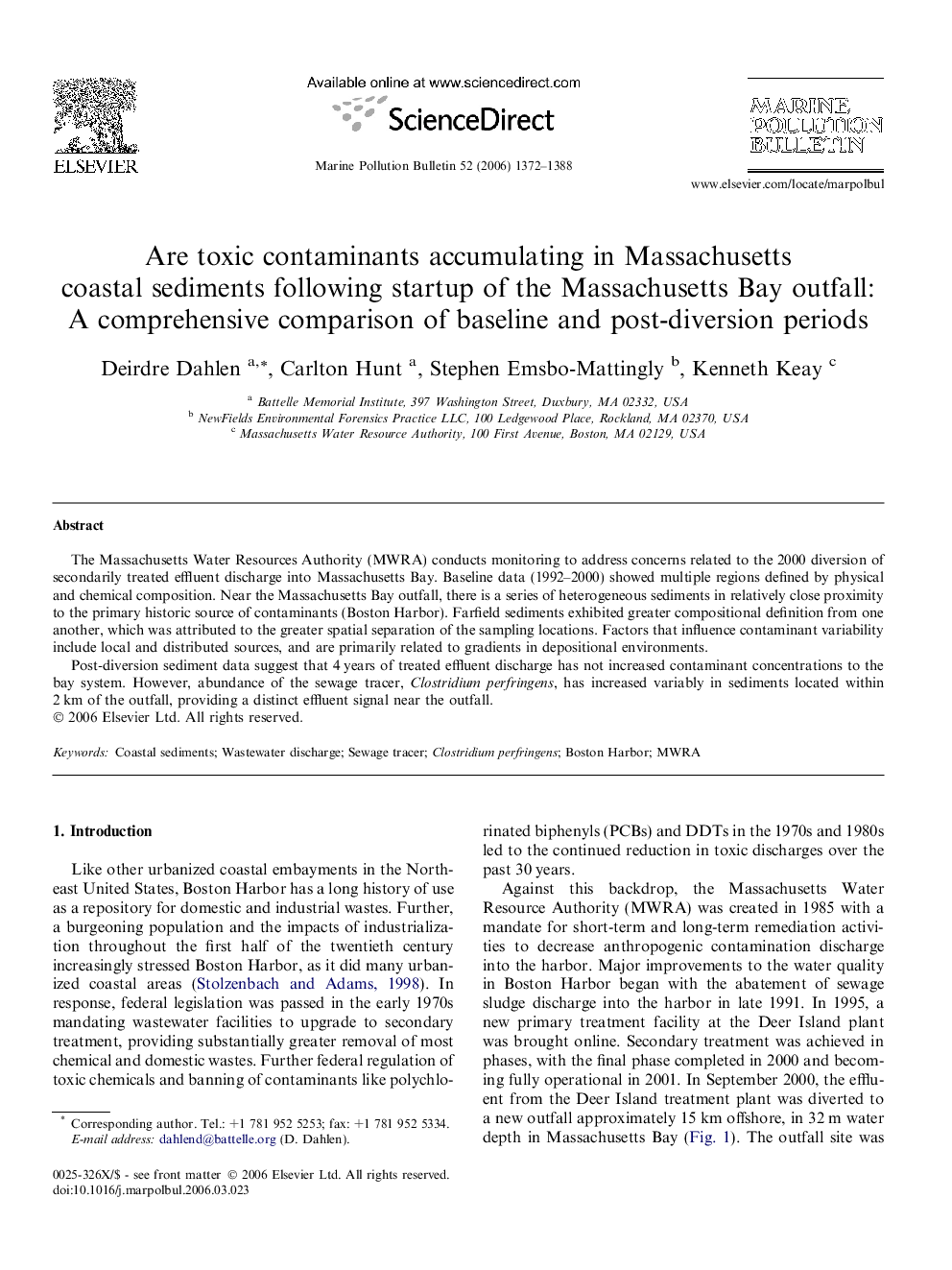| Article ID | Journal | Published Year | Pages | File Type |
|---|---|---|---|---|
| 4478053 | Marine Pollution Bulletin | 2006 | 17 Pages |
The Massachusetts Water Resources Authority (MWRA) conducts monitoring to address concerns related to the 2000 diversion of secondarily treated effluent discharge into Massachusetts Bay. Baseline data (1992–2000) showed multiple regions defined by physical and chemical composition. Near the Massachusetts Bay outfall, there is a series of heterogeneous sediments in relatively close proximity to the primary historic source of contaminants (Boston Harbor). Farfield sediments exhibited greater compositional definition from one another, which was attributed to the greater spatial separation of the sampling locations. Factors that influence contaminant variability include local and distributed sources, and are primarily related to gradients in depositional environments.Post-diversion sediment data suggest that 4 years of treated effluent discharge has not increased contaminant concentrations to the bay system. However, abundance of the sewage tracer, Clostridium perfringens, has increased variably in sediments located within 2 km of the outfall, providing a distinct effluent signal near the outfall.
